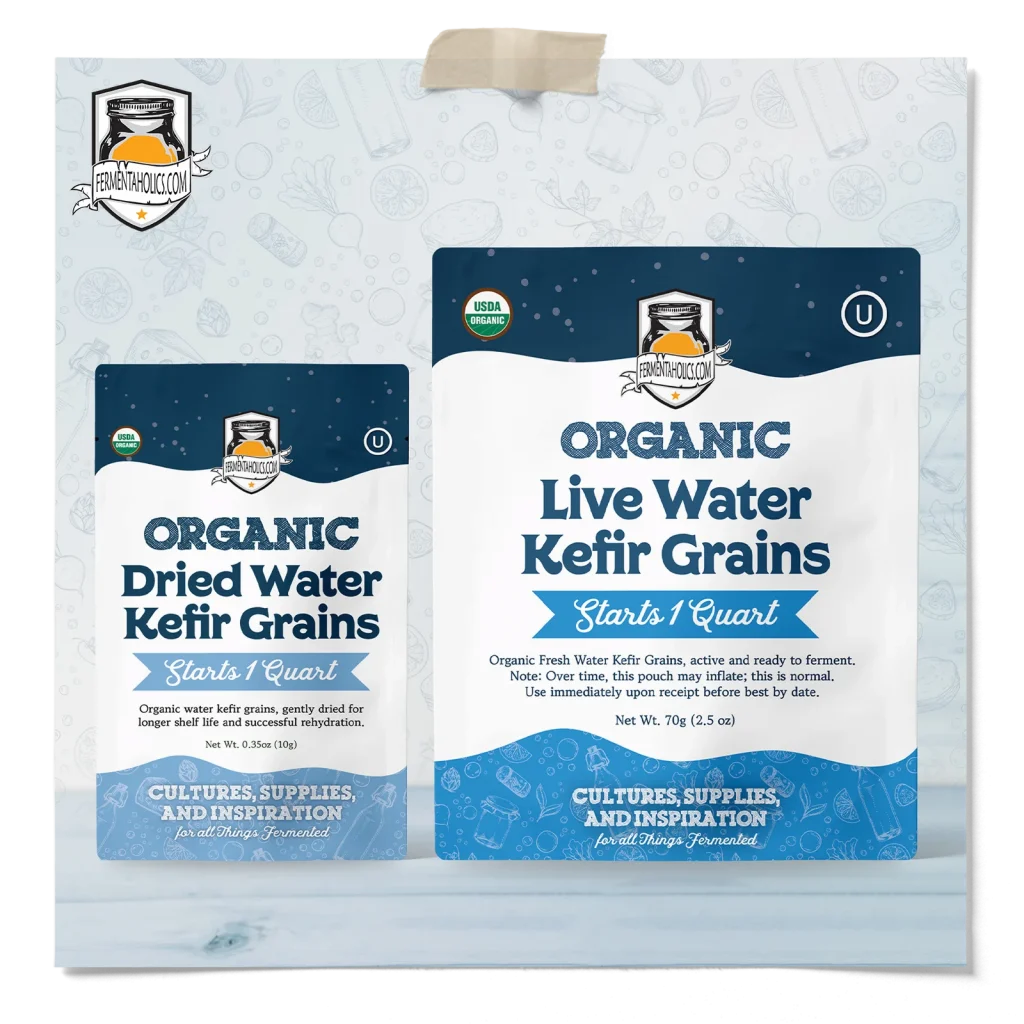
When you first start reading up and learning how to make water kefir, you’ll inevitably come across water kefir grains in two forms: live and dried (also called dry or dehydrated), you get the idea. From here, two common questions follow: What is the difference between the two, and which one is better? The answer is that both forms are equal in terms of culture and the final product.

The primary difference lies in their packaged shelf life and then the slightly different processes from when you open the package to the completion of primary fermentation. So let’s go over the differences.
Live water kefir grains are symbiotic cultures of bacteria and yeasts (SCOBY) that look like small, translucent gel-like beads. They are not actually grains. As the name suggests, live water kefir grains are active and ready for use upon arrival. Once added to sugar water, they will begin fermenting the sugar into a lightly carbonated, probiotic-rich beverage. These grains in the package have a limited shelf life and should be used as soon as possible after receiving. You’ll find a “best by” date on the package, indicating the timeframe for using the grains to ensure freshness and effectiveness. It’s helpful to think of packaged live water kefir grains as perishable items, such as milk, which have a period when they should be used.
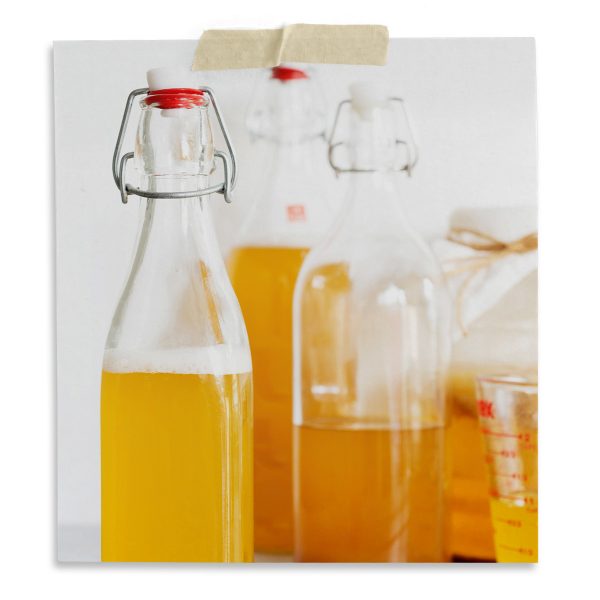
So, just be mindful of the suggested best-by date to ensure that your kefir grains remain active and produce the best possible results. The benefit of using live water kefir grains is that they are already alive, active, and ready to ferment a batch of water kefir immediately.
In contrast, dry water kefir grains have been dried for preservation and storage. They offer a convenient, shelf-stable option for those looking to make water kefir fermentation without the immediate need to start. They can be stored for extended periods and are ideal for those who may wish to wait to begin the fermentation process. Once you are ready to use the grains, they require a rehydration brew before making your first batch of water kefir.
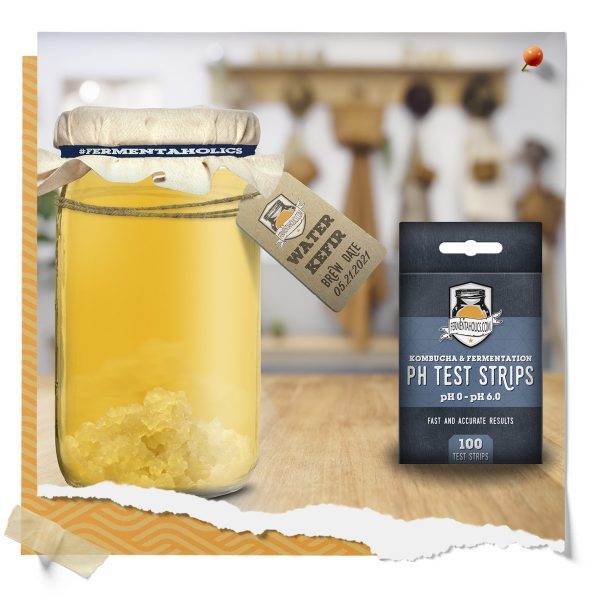
Once you have water kefir grain, the primary fermentation steps will differ slightly depending on whether you have live or dry kefir grains. For those new to this concept, primary fermentation is the step in which sugar water ferments into water kefir. The water kefir will be finished and noncarbonated when this step is complete. If your goal is still water kefir, it’s ready to drink. Otherwise, if you’re like most, you will want to flavor and carbonate it from here with another round of fermentation. This step is called bottle conditioning, but nowadays, it’s mostly referred to as secondary fermentation. As the name suggests, secondary fermentation is a second round of fermentation where you bottle, flavor, and carbonate the water kefir. So, irrespective of the type of grains you choose, the resulting water kefir will be the same, but the steps to get there vary slightly.
The main difference lies in their shelf life and initial preparation. Choosing the right type depends on your preference and when you plan to use them.
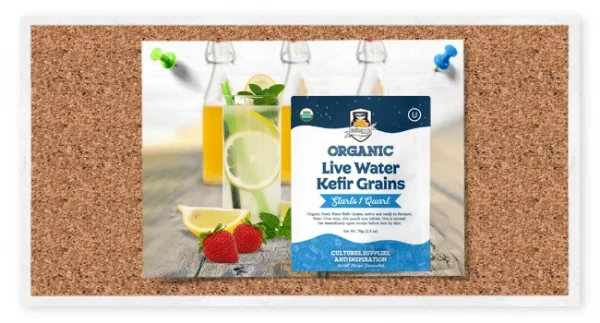
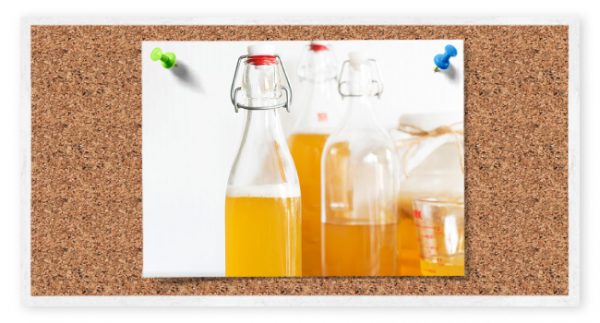





A refresher batch, or rehydration batch, is needed with dry water kefir grains prior to primary fermentation. Here are the quick steps. If you need complete instructions, head over to our post on How to Rehydrate Water Kefir Grains.

Now that your water kefir grains are rehydrated, they are ready to use. Now it’s time for primary fermentation. For full instructions, be sure to check out our post on How to Make Water Kefir.
When deciding between live and dried water kefir grains, consider your personal preferences and circumstances. If you’re ready to start making water kefir immediately, live grains are the way to go. These active grains allow you to begin your first batch right away without the additional 1-5 days refresher brew required to reactivate dry water kefir grains. Alternatively, if you’re not in a rush to start fermenting and prefer the flexibility of storing and having water kefir grains on hand for future use, dried grains are the better choice for you. They offer the convenience of a longer shelf life, typically up to a year, allowing you to begin fermenting at your own pace. Ultimately, both options yield the same delicious result, so choose the one that best suits your needs and lifestyle.
So now that you know the difference between live and dry water kefir grains, don’t stop here. Pick up some water kefir grains and get started on your fermentation journey. I think you’ll be pleased with the results.
